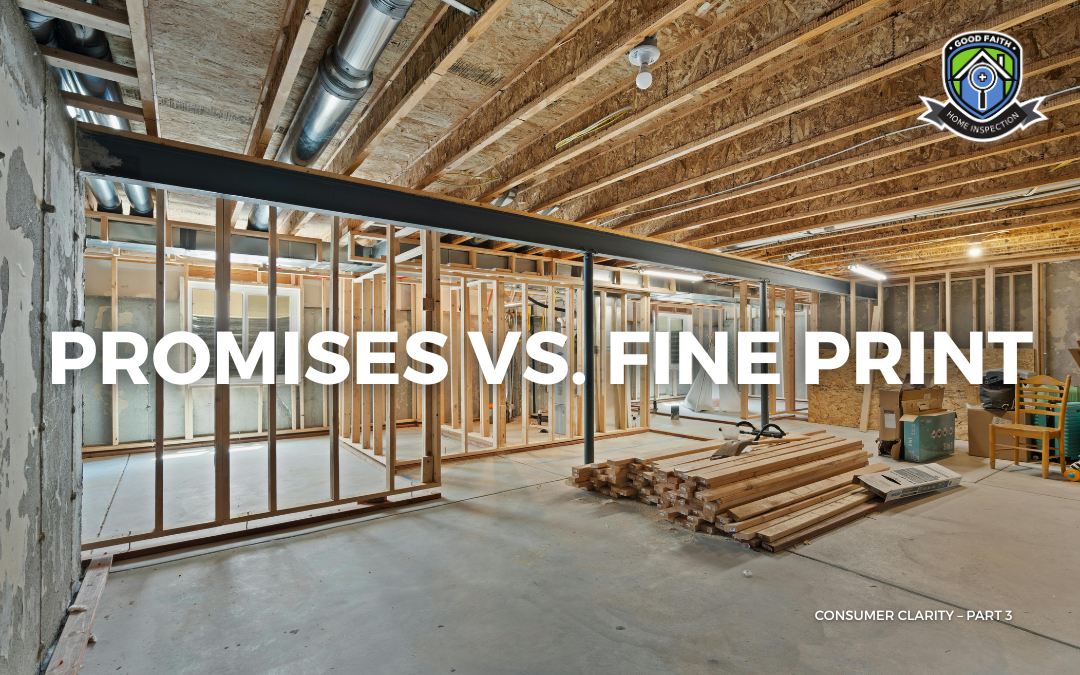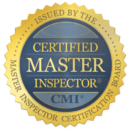
by Desmond Thornton | Aug 29, 2025 | Home Inspections, Informational Material
When buying a home in Chattanooga, most buyers focus on the obvious inspection points — the roof, foundation, plumbing, and electrical systems. But one area often overlooked is the air you’ll be breathing once you move in. An air quality check in home is an optional add-on to a standard inspection that can uncover hidden risks and give you confidence in your purchase.
What Is an Air Quality Test?
An air quality test evaluates the indoor environment for pollutants that aren’t always visible. Inspectors may take samples of air and surfaces to detect common issues like:
Mold spores — often linked to moisture problems.
Volatile Organic Compounds (VOCs) — chemicals released from building materials, paints, or cleaning products.
Radon — a naturally occurring radioactive gas known to increase cancer risks.
Pollen and allergens — common in Chattanooga due to high seasonal pollen counts.
The goal of testing is to identify contaminants that could impact your family’s health before you finalize your purchase.
Why It Matters in Chattanooga
Chattanooga’s environment brings unique air quality concerns. The city is in a valley, which can trap air pollutants, and it ranks high nationally for pollen and seasonal allergies. High humidity levels also increase the risk of mold growth in basements, crawlspaces, and poorly ventilated homes. According to the EPA, Tennessee is considered a zone of concern for radon, making testing particularly valuable in this region.
By including an air quality check in home during your inspection, you can detect issues tied specifically to Chattanooga’s climate and geography.
When Should Buyers Consider It?
Not every buyer will need an air quality test, but it’s especially useful if:
- You or your family members have asthma, allergies, or respiratory sensitivities.
- The home has a history of flooding, water damage, or musty odors.
- The property is older and may have outdated materials.
- You want extra assurance about the long-term livability of the space.
While a standard home inspection covers visible defects, it cannot confirm what’s in the air. An air quality check in home fills that gap.
How the Process Works
Air quality testing usually involves placing monitoring equipment inside the home or collecting samples for lab analysis. The results can take anywhere from 24 hours to a few days, depending on the type of test. Your inspector will provide a report detailing the findings and possible next steps, such as remediation if elevated mold spores or radon are detected.
Key Takeaway
For Chattanooga homebuyers, an air quality check in home provides peace of mind that goes beyond the basics of a standard inspection. With the region’s unique challenges—pollen, humidity, and radon exposure—this optional step can reveal hidden risks and help ensure your new home is safe and comfortable for years to come.

by Desmond Thornton | Jul 29, 2025 | Informational Material
You’re told it’s covered — until you need it. Then the clauses start to speak louder than the promises.
Welcome to the world of guarantees, warranties, and insurance contracts: where peace of mind often has footnotes you never read.
This entry in the Consumer Clarity series unpacks the illusion of coverage in real estate, from builder warranties to aftermarket home protections — and how consumers can navigate the murky waters between trust and truth.
New Construction: Peace of Mind… in Pieces
Most new homes come with a builder’s warranty — commonly referred to as a 1–2–10 plan: one year on workmanship, two on systems, and ten on structure. On paper, that sounds strong. In practice, it depends heavily on who built your home and how they interpret their responsibilities.
Some reputable builders go above and beyond. But many stick to the bare minimum — and some let cosmetic or functional issues “expire” before addressing them, arguing that problems weren’t reported within the correct window.
This leads to one of the first disillusions of homeownership:
Just because something went wrong doesn’t mean the warranty agrees with you about when.
And because most homeowners aren’t trained to spot early signs of failure, issues often go unreported until they become costly — or are denied for being “too late.”
The Pre-Owned Home Warranty Pitch
Home warranties offered during resale transactions sound comforting. They’re marketed as a catch-all for aging systems and surprise breakdowns. But here’s the tension:
Many of these policies are strictly limited in scope, and unless you’ve read the exclusions line by line, the moment you file a claim could become the moment you learn what isn’t covered.
Pre-existing conditions? Not covered.
Improper maintenance (even unknowingly)? Not covered.
Replacement value? Often only partial or prorated.
Take HVAC systems, for example: a failed compressor might be replaced, but the rest of the unit — including ductwork or refrigerant upgrades — might fall outside the warranty’s language.
This doesn’t mean home warranties are scams — but it does mean they’re not magic wands.
The core issue isn’t that the warranty lied — it’s that the buyer trusted the promise more than they read the print.
Why Some Agents Stay Quiet — and Others Don’t
You might’ve noticed something strange: some real estate agents strongly recommend home warranties. Others avoid mentioning them at all.
Why the difference?
For some, it’s about keeping deals alive — giving buyers peace of mind to close confidently. For others, it’s about avoiding liability. If a warranty fails to deliver, the buyer may blame the person who recommended it.
While kickbacks for referrals are illegal under RESPA, there are still gray areas in vendor relationships, especially when it comes to “preferred” providers or sponsored marketing.
This doesn’t mean bad intent — but it does mean the ecosystem isn’t always neutral.
In short: if no one is explaining the warranty to you, it might be because they don’t want to be the one blamed when it doesn’t work.
How Home Inspectors Should Handle It
Home inspectors walk a fine line. We’re trained to speak the truth about what we see — not about what a third-party policy may or may not do.
So we often say things like:
“This unit is older, but functional today.”
“A home warranty may be worth considering — just be sure it covers full replacement, not just repair.”
We are not supposed to endorse specific companies, nor are we supposed to give legal advice on coverage. But we can and should educate buyers on what they might face post-closing — especially if large systems are aging.
And yes, some inspection companies do receive compensation for warranty tie-ins. That’s not inherently wrong — as long as it’s disclosed. But that makes clarity even more important.
A good inspector will arm you with insight — not assumptions.
What Should “Guaranteed” Really Mean?
Here’s a better definition:
Inclusion, not exclusion.
Transparency, not loopholes.
The consumer’s interest, not the insurer’s incentive.
There are companies out there trying to do it right. But they often get priced out — because consumers don’t always reward integrity. They reward with price.
So before you buy into a guarantee, ask yourself:
Do I really understand what’s being promised — or just hoping for peace of mind?

by Desmond Thornton | Jul 22, 2025 | Informational Material
The Home Warranty Illusion
Home warranties are sold as peace of mind. But when something breaks—especially something major—they often introduce more frustration than relief.
You think you’re protected… until the fine print starts talking.
This isn’t just about shady companies. It’s about how we think protection works—and the gap between the perception and the reality.
Why Inspectors Stay Quiet
In many real estate circles, inspectors are quietly discouraged from discussing home warranties at all. Not because they aren’t important—but because they’re unpredictable. Recommend one that fails, and it reflects on you. Criticize one, and you risk upsetting the agent.
I’ve seen both.
I once cautioned a buyer about aging HVAC systems and suggested a home warranty—not as a fix, but as a buffer. The agent called me later, upset that I’d “stepped outside my lane.” And yet, younger agents today often recommend warranties themselves as deal-saving tools.
So why the shift?
The uncomfortable truth is this: sometimes, it’s not about the client—it’s about the commission. In some circles, warranties are just another checkbox to close the deal.
What’s Actually Covered?
This is the part many buyers don’t realize:
Most home warranties don’t fully replace broken systems. They offer pro-rated reimbursements, patchwork repairs, or deny claims entirely based on “pre-existing conditions.”
That means your AC could die a month after closing—and you still pay thousands out of pocket.
It’s not always malicious. These are contracts, and they’re written with precision. But that precision usually favors the company, not the consumer.
Used as Leverage, Not Safety
For some agents, warranties serve as a safety net—“We’ll buy you a year of coverage in case anything comes up.” But unless buyers understand what’s not included, it can create a false sense of protection.
And that false confidence creates problems:
Buyers delay critical repairs, assuming they’re covered.
Claims get denied for technicalities.
Frustration builds—at the inspector, the agent, the process.
The Real Danger: Assumption
Warranties aren’t inherently bad. Some offer great value, especially for low-cost repairs or minor system failures. The problem isn’t the product—it’s the assumption of safety.
When buyers believe the warranty will “cover everything,” they stop asking the right questions.
And that’s where the harm happens. Not in the denial—but in the delay, the shock, and the misaligned expectations.
What We Recommend
Do your research before accepting any home warranty.
Ask for full policy documents, not just a brochure.
Clarify replacement vs. repair and what counts as pre-existing.
Never rely on a warranty to fix what your inspection already flagged.
As a home inspector, I don’t profit from what you choose. But I’ve seen what happens when good people get caught off guard. I’d rather warn you today than hear your frustration tomorrow.
Truth Over Trust. Always.
Because in the end, peace of mind doesn’t come from paperwork. It comes from knowing what’s real—and being prepared when it’s not.

by Desmond Thornton | Jul 15, 2025 | Home Inspections, Informational Material
When you buy a home, you’re told you’re “covered.” But what happens when you’re not? This is the truth behind what too many homeowners discover too late: coverage is a concept, not a guarantee.
This is not just a story about insurance. It’s a mirror held up to a system built more to protect itself than the people who fund it. And it begins with a collapse.
The Collapse That Started It All
A friend called me about a collapsed front porch. Not from a storm. Not from an earthquake. From time.
The home was built in 1999. The porch was load-bearing—supporting the front structural wall of the home. But the blocks beneath it were turned horizontally, cores facing out. That orientation is structurally incorrect. These CMUs (cinder blocks) were designed to carry load vertically. Laying them sideways created a ticking time bomb.
Add to that: there was no proper footer or support wall. The slab floated, unsupported, for over two decades. And beneath it? Construction debris. Trapped moisture. Hidden weakness.
Eventually, the inevitable happened. It cracked. It sagged. It fell.
The homeowner had no idea this space existed. The area was sealed off during the original build. It wasn’t visible, even to a home inspector.
He filed an insurance claim. The first answer was no. The second was: prove it.
He brought in someone. Then someone else. Eventually, the issue got escalated high enough to be considered for full replacement. And only then did I get involved—advising a structural engineer be brought in immediately.
What the Evidence Shows
Structural Misuse of CMU (Cinder Blocks)
The blocks were laid horizontally (cores facing out), which is incorrect for load-bearing support. This reduces their ability to distribute weight and makes them prone to failure over time—especially with no reinforcement.
Lack of Footer or Substructure Support
There was no visible evidence of a proper footing or secondary support wall beneath the slab. A floating slab without support will shift, sink, or fail entirely. That’s exactly what happened.
Concealed Construction Debris
The void beneath the slab was filled with leftover debris from the original construction—a moisture trap that led to rot, fungus, and accelerated material failure.
Brick Veneer Separation
Photos showed bulging and shear cracking of the brick veneer—a clear indicator of differential settlement and structural instability.
Insurance: Designed for Delay?
Here’s what makes this worse: this homeowner had paid for insurance, faithfully. He had never made a claim. But when the need finally came, he had to jump through hoops just to be heard.
This isn’t rare. It’s increasingly the norm.
The system seems designed for denial first. Delay second. Maybe payout third. Maybe.
“We think we’re paying for protection, but often we’re just funding someone else’s risk calculations.”
What if you had put that same money in a personal account? Let it gain interest? Let it serve you, not someone else’s shareholders?
That’s not insurance. That’s financial clarity. But most people aren’t taught that option exists.
The Real Game: Be the House
When I first heard the phrase “be the house,” I thought of casinos. The house always wins.
And then I realized: that’s insurance. That’s why they litigate. Stall. Obfuscate. It isn’t personal. It’s probability. The system is rigged to favor the one setting the rules.
If you aren’t the house, you’re the bet.
“If you’re not the house, you lose.”
That doesn’t mean everyone working in insurance is corrupt. But it does mean the system itself isn’t built to say yes easily. And that needs to change.
Final Thoughts
This isn’t about blame. It’s about awareness. The collapse of that porch wasn’t caused by bad luck. It was caused by a series of shortcuts, cover-ups, and blind spots that eventually reached their limit.
Insurance failed. Construction failed. Visibility failed.
And that failure could have been deadly.
So what’s the solution?
Better construction oversight.
Structural transparency.
A new consumer model of accountability.
This is just the beginning of Consumer Clarity. And we’re just getting started.
Next Up: Home Warranties: The Promises That Expire Before the Appliance Does.

by Desmond Thornton | Jul 8, 2025 | Home Inspections
They didn’t expect it to work.
Not like this.
The sign went in the yard like any other. A clean, white QR code anchored to the ground, standing tall in front of a modest 3-bed, 2-bath.
Listing #1.
Nothing flashy. No major upgrades. Just a solid home, priced fairly.
Within 48 hours, three different buyers scanned the sign, viewed the landing page, and purchased the inspection report.
Two submitted offers. One walked away after seeing the HVAC was at the end of its life.
That information didn’t scare the others. It helped them structure better offers. And when the sellers accepted the highest bid, the buyer knew exactly what they were getting into.
No surprises. No re-negotiation. No awkward calls asking, “Why didn’t you catch this?”
The seller never paid a dime for the inspection.
The sign paid for itself.
Listing #2 told a different story.
The home had charm, but it also had some issues in the crawl space. Nothing catastrophic. But enough that only two buyers purchased the report.
Because the minimum number wasn’t met, the seller covered the inspection fee. But they didn’t see it as a loss.
They saw it as protection.
Neither of the two buyers backed out. One was grateful to know what they were walking into and adjusted their offer accordingly. The seller accepted, knowing they wouldn’t be asked for unexpected concessions weeks later. The other buyer didn’t offer, but left a positive review about the transparency.
The listing agent used the success of the sign in their next listing presentation.
That seller said yes before they even finished the pitch.
One builder decided to test it.
New construction. 2,100 square feet. Fresh paint. Stainless appliances. But the crawl space had moisture signs the municipality inspector missed.
So he called us.
We did a full Good Faith Inspection, and the builder purchased the report himself through the QR code to access it.
Then he got to work.
He fixed the grading. Repaired flashing. Added ventilation. Everything was rechecked, rephotographed, and added to the report.
When buyers scanned the sign, they didn’t just see issues.
They saw a builder who cared enough to fix them.
The first buyer said yes. The home closed in 12 days.
But not everyone saw the opportunity.
Another buyer scanned the sign. Loved the house. Loved the idea of knowing what they were getting.
But her agent didn’t see it that way.
“You don’t need to pay for that,” they said. “Let’s wait until we’re under contract. Then we’ll get it inspected.”
She hesitated—but trusted them.
It was a pretty house. The one with the porch she imagined her son swinging on. The one close to her new job. The one she couldn’t stop picturing herself in.
But she waited.
A week later, she checked again—ready to buy the report and write the offer.
Gone.
Under contract.
Someone else had seen the inspection. Someone else made the offer. Someone else got the keys.
And she was left not just without the house—but with a new feeling:
Regret, dressed as silence.
Because sometimes the loudest mistake… is the one you don’t make in time.
The Agent in the Middle
We’ve seen it more than once: a buyer wants to purchase the report. Their agent talks them out of it.
Then a second home shows up.
Similar price. Similar layout. But this one’s already under contract.
The buyer gets frustrated. “Why didn’t we move faster?”
The agent is caught between protocol and progress. Between tradition and transparency.
And somewhere in that tension, the Good Faith Inspection Program does its quiet work:
It reveals who’s ready for the future—and who’s still clinging to the past.
In the End, the Good Faith Inspection Program Doesn’t Just Help Buyers
It helps sellers show strength. It helps agents build trust. It helps builders demonstrate quality. It helps inspectors do the job they were trained to do—without compromise.
But most importantly?
It helps the right people make the right moves at the right time.
Because when you tell the truth first, you don’t have to spin it later.
And the market doesn’t just notice.
It responds.









